Forbidden City exhibition shows life of emperors' mothers
Updated: 2015-10-30 03:50
By Deng Zhangyu(China Watch)
|
||||||||
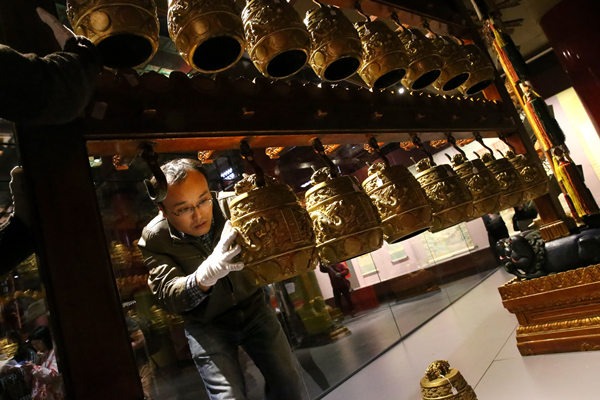 |
|
An employee at the Forbidden City examines a musical instrument likely used to perform an opera to mark a royal birthday. The instrument is part of the museum's new exhibition. JIANG DONG / CHINA DAILY |
The Forbidden City, the ancient home of China's royal court, has been further opened to the public, with visitors now able to get a glimpse inside the personal chambers of the emperors' mothers.
Cining Palace, which lies in the western part of the massive complex in central Beijing, includes luxuriously decorated bedrooms and a private worship hall filled with small, golden Buddha statues.
Opening the area to tourists is part of celebrations to mark the 90th anniversary of the Palace Museum, which was created on the site of the Forbidden City, a landmark that has stood for over 600 years.
Public access has also been granted to wings of Meridian Gate, East Prosperity Gate and the Baoyun Building, a warehouse built in 1914 to store artifacts, while more than 1,000 royal treasures have been placed on display, many of them for the first time.
The new areas offer a rare opportunity for people to learn more about the emperors and their families, said museum director Shan Jixiang. He added: "There are ghost stories about the women’s residences in the Forbidden City. Now visitors can see the stories are just tales."
Shoukang Palace, one of the newly opened areas that forms part of the Cining Palace area, was the residence of Empress Dowager Chongqing, mother of Emperor Qianlong (1711-1799), who lived until she was 86. Inside, over 200 items on display show what life for her was like, including formal clothes and a rosewood closet full of jewelry. Chongqing also had a private garden as large as a football field that features a Buddhist shrine.
"It's the first time a worship hall in the Forbidden City has been opened to the public," said Wen Ming, director of the museum's religion department. The complex has 40 in all. "Many emperors' wives and concubines had worship halls in their residences. They all believed in Buddha."
Cining Palace also has more than 500 sculptures, mostly large Buddha statues made of stone, wood, silver, gold or jade. Some are more than 2,200 years old.
Meridian Gate, the biggest exhibition hall, has a birthday-themed exhibition that includes clothes, gifts, musical instruments and food recipes. The birthdays of emperors and their mothers were national celebrations.
On show for the first time is a 130-foot-long painting that depicts street celebrations for the 60th birthday of Emperor Kangxi (1661-1722), while another display includes a gilded rifle presented to another emperor by Lord Macartney, an envoy of Britain's King George III sent in 1793.
"We've found lots of birthday gifts sent by foreign countries to Qing Dynasty emperors (1644-1911) in our warehouses," said Ren Wanping, the museum’s director of antiquities.
Also among the gifts, he said, were screens on which poems have been written by the emperors' sons and grandsons.
The new attractions, which were officially opened on Oct. 10, have already proved a hit with visitors.
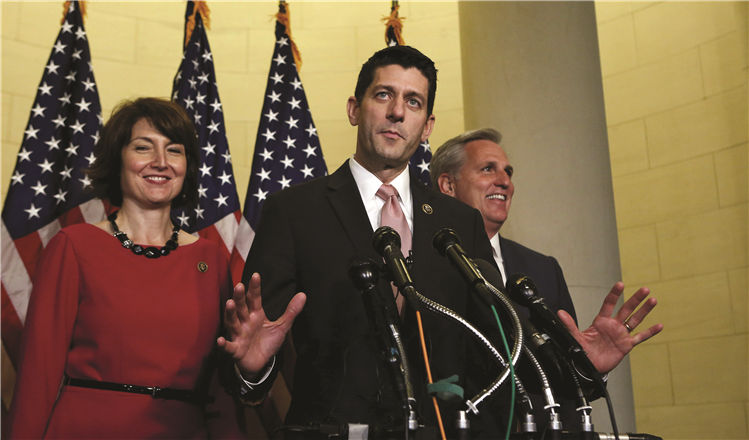
 Ryan nominated for speaker
Ryan nominated for speaker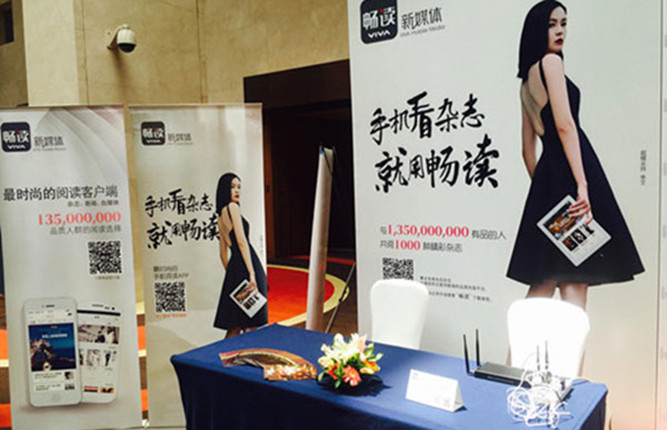
 Top 10 news apps favored by smartphone users
Top 10 news apps favored by smartphone users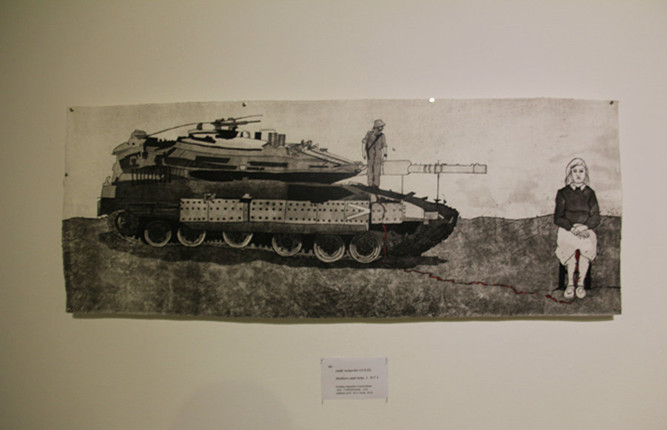
 Intimate Transgressions: More than just pain
Intimate Transgressions: More than just pain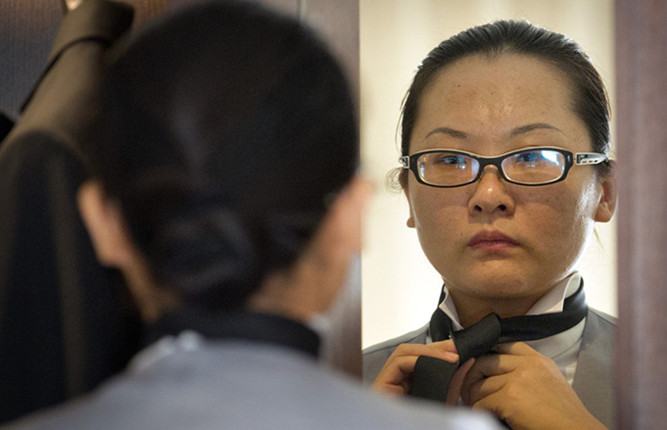
 Want a butler at your home?
Want a butler at your home?
 Rescue operations in full swing as quake death toll hits 365
Rescue operations in full swing as quake death toll hits 365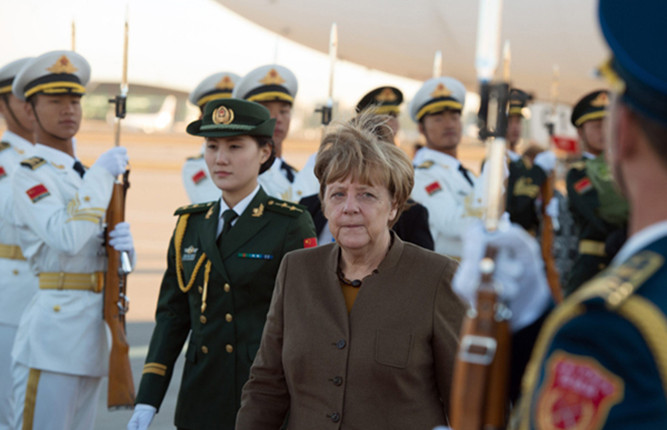
 Merkel's visits to China aimed at forging 'special' ties
Merkel's visits to China aimed at forging 'special' ties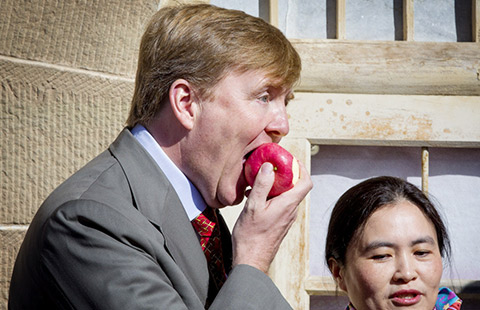
 Netherlands king enjoys local flavors of Yan'an
Netherlands king enjoys local flavors of Yan'an
 NBA MVP Curry scores 40 points, Warriors win opener
NBA MVP Curry scores 40 points, Warriors win opener
Most Viewed
Editor's Picks

|

|

|

|

|

|
Today's Top News
Tu first Chinese to win Nobel Prize in Medicine
Huntsman says Sino-US relationship needs common goals
Xi pledges $2 billion to help developing countries
Young people from US look forward to Xi's state visit: Survey
US to accept more refugees than planned
Li calls on State-owned firms to tap more global markets
Apple's iOS App Store suffers first major attack
Japan enacts new security laws to overturn postwar pacifism
US Weekly

|

|







